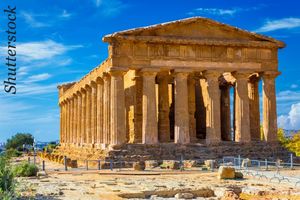In the days of the apostles, paganism was rife.
Everywhere Paul went in the Mediterranean world he was confronted with idolatry and a distinctive lifestyle that was associated with it.
At Lystra, following the healing of the crippled man, the people were ready to explain the event as ‘the gods have come down to us in the likeness of men’, and called Barnabas ‘Zeus’ and Paul ‘Hermes’ (Acts 14:8-14).
On entering Athens, ‘his spirit was provoked within him when he saw that the city was given over to idols’ (Acts 17:1).
The silversmiths in Ephesus who made shrines of Diana were furious with Paul because they were losing their customers. They stirred up a riot (Acts 19:21-41).
Idolatry was deep-rooted and had prevailed for hundreds of years.
Some years ago my wife and I visited Sicily. We spent some time at one of the island’s most famous historical attractions, the Valle dei Templi. Here we saw the ruined remains of temples devoted to various gods and goddesses. Such temples were a familiar sight throughout the Roman Empire.
The idolatry of the ancient world was closely linked to gross immorality and drunken debauchery. Corinth was notorious for such activities. Indeed, to ‘Corinthianise’ somebody was to draw them into a promiscuous lifestyle.







